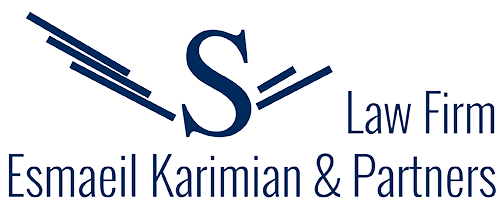Project Finance
Introduction
Project financing and its chain agreements are among the most important legal, financial and economic issues in the international arena. In project financing from the point of view of the parties involved, on the one hand, the relationship between the public sector and the private sector is discussed, and on the other hand, the relationship between consortium members in the private sector, the relationship between the private sector and the banks and financial institutions that financing the project, the contractor constructing the project, or the private sector’s relationship with other parties involved in the project, such as the operation and maintenance contractor.
ESK Internationla Law Firm
Our team is composed of highly skilled and versatile lawyers who combine practical experience and academic knowledge of their field. Most of our practitioners have worked in different professional environments, often outside their home jurisdiction.
One of the first, and most important, issues that the project sponsors will face in deciding how to finance a particular project will be how to invest in and fund the project. There are several different structures available to sponsors for this purpose. The most common structure which is widely used in project finance specifically to regulate and to structure the relationship between the sponsors is a joint venture.
As a general rule, the JV structure can be used in every industry sector, except for those areas that are based on the laws and regulations governing the JV are either under the monopoly of the government or in limited instances where foreign majority shareholdings are not permitted.
A “joint venture” is not a legal term of art. It deals with a range of transactions where, as a common theme, two or more existing companies or firms agree to establish a common business activity in which they intend jointly and directly to participate (a joint adventure). Joint venture techniques and issues arise across a wide range of transactions, including collaborations on joint research projects, joint undertakings to finance and carry out infrastructure projects, joint ventures with local partners to commence business in new geographic regions, multi-party start-up ventures to develop and exploit new technologies and full-scale mergers of existing businesses into jointly owned corporate groups.

Commercial objectives driving any particular joint venture will, of course, vary from case to case. They include:
1. Cost savings
A common rationale is the objective of saving costs by achieving synergy benefits through rationalisation of employment or other fixed costs or by sharing with a joint venture partner or partners the costs of research and development (R&D) or capital investment programmes (a particular feature given the magnitude of investment costs involved in many industries such as electronics, defence, pharmaceuticals, telecommunications, and aero-engines).
2. Risk sharing
A similar rationale behind many ventures is the wish to share with another party or parties the significant financial risks which may be involved in undertaking a speculative or capital-intensive project.
3. Access to technology
Joint ventures may also provide a route for a party to gain access to, and learn from, a co-venturer’s technology and skills and thus accelerate entry into a particular technology or market.
4. Expansion of customer base
International joint ventures can also provide the most effective route for a party to expand the scope of its customer base by utilising a co-venturer’s strength in different geographic markets or by buying into a co-venturer’s distribution or sales network.
5. Entry into emerging economies
Joint ventures may provide the best, and sometimes only realistic, route for gaining entry to new emerging markets in areas such as Eastern Europe or Asia where access to local knowledge, contacts, or sponsorship is often a practical necessity.
6. Entry into new technology markets
The rapid pace of technological change is itself producing new markets. Effective entry into those markets can often be accelerated by participation with another company that already has a technical start in that field or provides complementary skills; a “go-it-alone” strategy may simply take too long or cost too much.
7. Pressures of global competition
On an international scale, the merger of similar businesses between two or more participants may be desirable in order to establish the economies of scale, global customer reach, purchasing power, or capital investment resources necessary to meet the strength of international competition.

8. Leveraged joint venture
Joining with a financial partner can be a method of financing an acquisition that would not otherwise be affordable—or, sometimes, structuring an acquisition in a way to avoid consolidation as a subsidiary for balance sheet purposes.
9. Creeping sale or acquisition
A joint venture may be the first step in eventual full disposal or acquisition of a business with a further tranche of the disposal or acquisition being contemplated, but perhaps not specified, for a later time.
10. Catalyst for change
Sometimes, there is a less obvious reason-a wish, by bringing in a partner, to create a catalyst for change or stimulate more entrepreneurial activity in a particular area of a party’s business (Ian Hewitt, Joint Ventures, London, Sweet and Maxwell, 2001, p. 3-4).
As a strategic alliance, the joint venture has a wide scope and is applicable in various stages of investment. Strategic alliances (SA) are trading partnerships and new business forms that enable participating firms to achieve strategic objectives beyond their existing capabilities by providing for mutual resource exchanges (technologies, skills, or products).
SA involves two or more partner firms that:
(1) remain legally independent after the alliance is formed;
(2) share benefits and managerial control over the performance of the partnership; and
(3) make continuing contributions to the partnership.
SA encompass both short-term project-based and long-term equity-based cooperation between firms with varying degrees of vertical integration and interdependence, and/or horizontal synergies. SA combine the assets and capabilities with the liabilities of all partners. (Emanuela Todeva, “Strategic Alliance”, International Encyclopedia of Organization Studies, 2007, p. 1.)
In large-scale investment projects, such as oil and gas contracts, the relationship between the members of the consortium is regulated according to JV and in the form of a Joint Operating Agreement (JOA). In addition to regulating the relationship between International Oil Companies (IOC) either through consortium agreement in the tender stage or a JOA in the operation stage, the model contract in the upstream sector of the oil and gas industry between the National Oil Company (NOC) and the IOC may also be based on a joint venture.
ESK Law Firm and Project Finance Services
Public-Private Partnerships (PPP) and other project financed transactions have in recent years considerably increased private sector´s participation in major infrastructure projects. PPPs bring unique challenges related to the need to allocate and balance the risks between the public and private sectors; financing based on the project´s expected revenue streams; and the different private sectors interests involved. All this results in PPP structures that are complex to negotiate, set up and operate.
ESK Law Firm is recognized as a reputable firm in the field of project finance. Our team is renowned for its expertise in limited recourse financings in all sectors, including energy and resources, utilities and infrastructure. Our team brings an integrated and creative approach to the structuring of projects, and has extensive experience of a wide range of financing techniques, including being at the forefront of the development of the project bonds market in Iran.
ESK has a long history representing various participants in the development and financing of capital-intensive projects throughout the world. With our industry experience, global reach and local understanding, we can provide comprehensive legal support in structuring energy and infrastructure financings of any nature.
Over the years, ESK lawyers have represented all types of participants in project finance transactions, from borrowers and sponsors to commercial banks, institutional lenders, insurance companies, underwriters, credit enhancers and hedge providers.
Our lawyers have significant experience working for or with multilateral development organizations, export credit agencies, regional development banks and other government-owned financing parties. As a result, our lawyers are fully familiar with all of the inter-creditor issues that may arise in multi-tranche financings.
